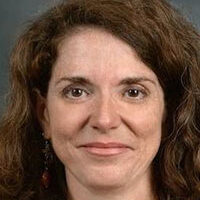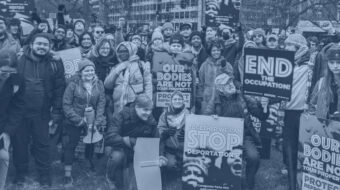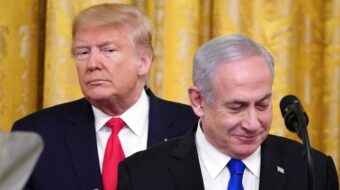
Iraqi scientists join forces with Americans to save antiquities
CHICAGO — The world cried in the spring of 2003, during the U.S. invasion of Iraq. But perhaps archaeologists cried the hardest.
Iraq, known as the “cradle of civilization,” is home to thousands of ancient cultural heritage sites. It is the birthplace of the world’s first cities, writing and the wheel. It was the center of world civilization, where the Sumerian, Assyrian and Babylonian empires were spawned.
In Iraq are sites important to the world’s “Abrahamic faiths” — Judaism, Islam and Christianity — like Nineveh, where Jonah is said to have walked and preached against the sins of the city dwellers.
In the wake of the U.S. invasion, thieves looted Baghdad’s Iraqi National Museum, the National Library and hundreds of archaeological digs whose ancient objects were not yet studied and recorded.
Iraqi museum staff took steps to protect the treasures. But not everything could be secured.
U.S. commanders issued no orders to protect the world heritage sites, although troops were ordered to protect Iraq’s oilfields. Some 15,000 objects were taken from the museum, and 6,000 have been recovered to date. It was the museum staff that eventually drove out the looters and secured the museum.
When confronted with consequences of this man-made disaster, Defense Secretary Donald Rumsfeld blithely told the press, “Stuff happens.”
Dr. James Phillips, director of the Iraq Cultural Heritage Project at The Field Museum here, had a different view. At a May 4 press conference announcing a State Department-funded program to train 18 Iraqi scientists in modern conservation techniques, Phillips said the U.S. should have had a plan to protect the museum and sites from “day one.”
Phillips said he thinks the U.S. has an obligation to help pick up the pieces as the war and occupation wind down.
“Do I believe that we owe them this training? Absolutely,’ he said.
The Field Museum is partnering with the University of Chicago’s Oriental Institute on the $13 million project. Phillips and the institute’s director, Gil Stein, will travel to Iraq (their first visit there) in October and visit archaeological sites throughout the country. “We hope to learn from our Iraqi colleagues” and find out their “specific needs,” Phillips said.
“There are hundreds, if not thousands of unexcavated sites,” he noted. “Some are towns or cities — huge places where you have to choose what to excavate. There aren’t enough archaeologists in the world to excavate all the sites we know of in Iraq.”
Stein emphasized the project is most important because it builds relationships between American and Iraqi scientists.
Last year the Oriental Institute presented an award-winning exhibit, “Catastrophe! The Looting and Destruction of Iraq’s Past.’ It pointed out the 1954 Hague Convention for the Protection of Cultural Property in the Event of Armed Conflict, which was finally ratified by the U.S. Congress in September 2008.
As part of the Field Museum’s Iraq Cultural Heritage Project, the 18 Iraqi scientists trained in the U.S. will return to Iraq and train others. Other plans are to build an institute in the city of Erbil, in Iraqi Kurdistan, focusing on technical and professional training in historic preservation, and to restore the Iraqi National Museum and upgrade it with new equipment.
The first six scientists arrived here in mid-March for an intensive English language course and orientation before the scientific collaboration begins. They will stay until September and they plan to visit a nearby archaeological site: Cahokia Mounds, just outside of St. Louis.
Sami Abdulhussein Hasan, a civil engineer, is among the group of six Iraqi conservators, archaeologists and engineers. An author of two books on historic restoration for buildings, monuments and mosques, Hasan has 22 years of experience in the field. Like the Leaning Tower of Pisa, mosque minarets or other structures suffer from erosion, cracks or soil instability, he said. He is interested in learning new techniques to analyze and preserve the ancient buildings — some of them made from mud bricks and gypsum mortar — from the effects that water has on them.
Another of the six, Ali Naser Merzah, has 11 years of experience in site exploration. An archaeologist, Merzah has worked on 120 sites, including Babylon, but perhaps none so exciting as the one he excavated last year where he found two temples and underneath them tombs that held two skeletons (a man and a woman), tablets written in cuniform (ancient inscriptions) and decorated pottery.
Because nothing is simple in Iraq, when these experts return they will face not only the challenges of security and rebuilding their country, but also political wrangling over who controls the ancient sites.
The New York Times reported May 3 that the site of legendary Babylon (where a U.S. base is located nearby) is newly opened amid controversy. While the Iraqi government is anxious to exert sovereignty over the heritage sites as a symbol of Iraq’s progress and stability, and open them to tourism (it re-opened the Iraq National Museum to the public in February), Iraqi experts worry they aren’t ready to go to prime time yet. In the case of Babylon, the provincial government seized the site and opened a park.
“‘Our problem, in terms of archaeology, is that we actually deal with ignorant people, whether in the Saddam era or the current era,’ said Qais Hussein Rashid, the acting director of the Board of Antiquities, which has legal authority over Babylon, but apparently not very much power,” The New York Times reported.
Antiquities and tourism have long been under the auspices of the Culture Ministry, including Rashid’s State Board of Antiquities and Heritage.
The Iraqi scientists in Chicago are all from the state antiquities board, said Shukran, a conservator and the only woman in the six-person delegation.
However, the government of Prime Minister Nouri al-Maliki recently established a Ministry of State for Tourism and Antiquities, setting up a potential rivalry with the Culture Ministry.
The Times report suggests the fight is more than just “competing interests of preservation and tourism” and reflects political rivalries on the federal level and uncertain division of power between federal and provincial authorities.
Yet, perhaps the root of these rivalries is as ancient as Iraq’s sites itself — money. Tourism, especially religious tourism, is a lucrative business and who or what governmental body gets the proceeds may be at stake.
For the most part though, American and Iraqi scientists are staying out of the political fray. “Luckily, we don’t have to deal with that,” the Field Museum’s Phillips said.
talbano @ pww.org
Related stories:
Civilization’s cradle destroyed by war
Blindsided in Iraq










